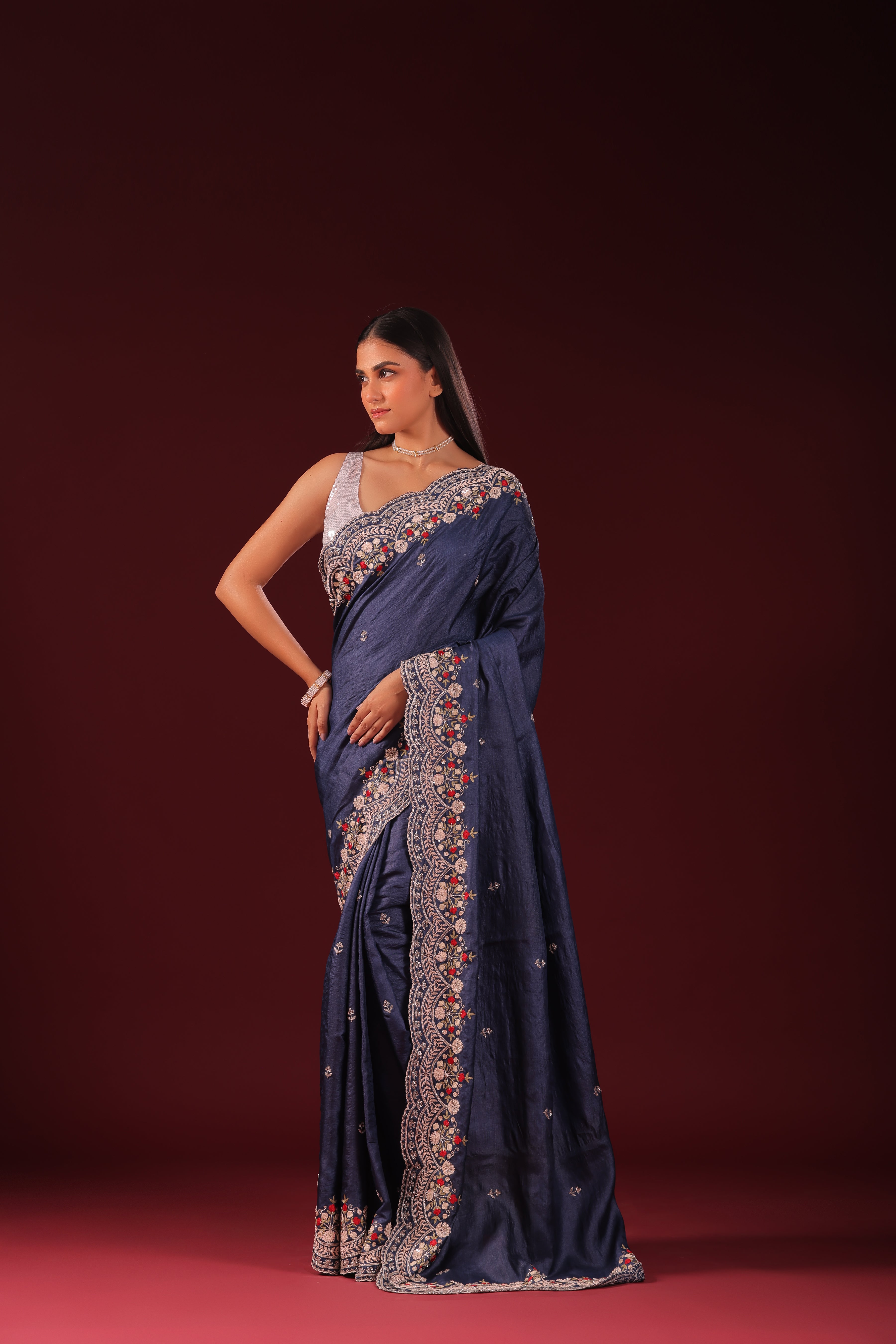Tussar Zardosi Work is a fusion of two traditional Indian elements: Tussar silk fabric and Zardosi embroidery. Together, they create a rich, luxurious, and ornate effect, often used for formal, festive, and bridal wear. Let’s explore both elements in detail:
1. Tussar Silk Fabric
-
Material: Tussar silk is a type of wild silk, produced by silkworms that are not cultivated but found in the wild. This makes Tussar silk more textured and naturally lustrous compared to other silk fabrics.
-
Appearance and Feel: The fabric has a slightly rougher texture and is often golden or light brown in color, although it can also come in other shades. It has a natural sheen that gives it a slightly matte appearance. Tussar is heavier than regular silk but still breathable and comfortable.
-
Characteristics: The fabric is known for its durability and its unique organic texture, which gives it a rich and earthy look. It's often used for sarees, salwar kameez, dupattas, and lehengas.
2. Zardosi Embroidery
-
Traditional Craft: Zardosi is a traditional form of hand embroidery that originated in Persia and later flourished in India, particularly during the Mughal era. The technique is known for using metallic threads like gold, silver, or copper to create intricate and luxurious designs.
-
Materials:
-
Metallic Threads: Gold, silver, or copper threads are used for creating designs, adding a royal and opulent touch.
-
Additional Embellishments: Pearls, sequins, beads, and rhinestones are commonly used in Zardosi work to enhance the richness of the embroidery and create texture.
-
Designs: The patterns in Zardosi work are often elaborate and include motifs like florals, paisleys, geometric patterns, and symbolic elements such as birds or peacocks.
3. Tussar Zardosi Work
-
Combination of Materials: When Zardosi embroidery is done on Tussar silk, the result is a beautifully textured, rich garment that has a regal appearance. The metallic threads shine beautifully against the earthy tones of Tussar, creating a striking contrast between the delicate shine of the embroidery and the natural sheen of the fabric.
-
Designs and Techniques:
- Zardosi work on Tussar silk can be used in various designs, from simple borders to elaborate, all-over patterns.
- Common motifs include floral patterns, paisley designs, peacock motifs, and other traditional Indian symbols. The embroidery is often done with fine detailing, creating a raised effect due to the metallic threads.
- Techniques such as couching, stitching, and beading are used to create depth and texture.
4. Applications of Tussar Zardosi Work
-
Bridal Wear: Tussar Zardosi work is often used in bridal sarees, lehengas, anarkalis, and dupatta sets, as it adds an air of sophistication and luxury.
-
Festive and Formal Attire: This combination is also popular for creating outfits for festivals like Diwali, Eid, or other celebratory occasions.
-
High-end Fashion: Designers often choose Tussar silk with Zardosi embroidery for couture collections, as it exudes elegance and a traditional touch with a modern appeal.
Characteristics of Tussar Zardosi Work:
-
Rich and Opulent: The metallic threads used in Zardosi work create a regal, luxurious effect, and when paired with the natural sheen of Tussar silk, it results in an outfit that is both intricate and breathtaking.
-
Textured and Elegant: The natural texture of Tussar silk enhances the depth of Zardosi embroidery, creating a three-dimensional, tactile quality to the garment.
-
Versatile Designs: Tussar Zardosi work can be both bold and intricate, making it suitable for various types of outfits, from subtle to heavily embellished pieces.
Conclusion
Tussar Zardosi Work is a beautiful fusion of organic Tussar silk and intricate metallic embroidery, which results in luxurious and regal-looking garments. It’s commonly used for bridal and festive wear, offering a perfect combination of texture, sheen, and opulence. Whether it’s for a bridal lehenga, a designer saree, or traditional outfits, Tussar Zardosi work is the epitome of luxury and elegance in Indian textiles.














